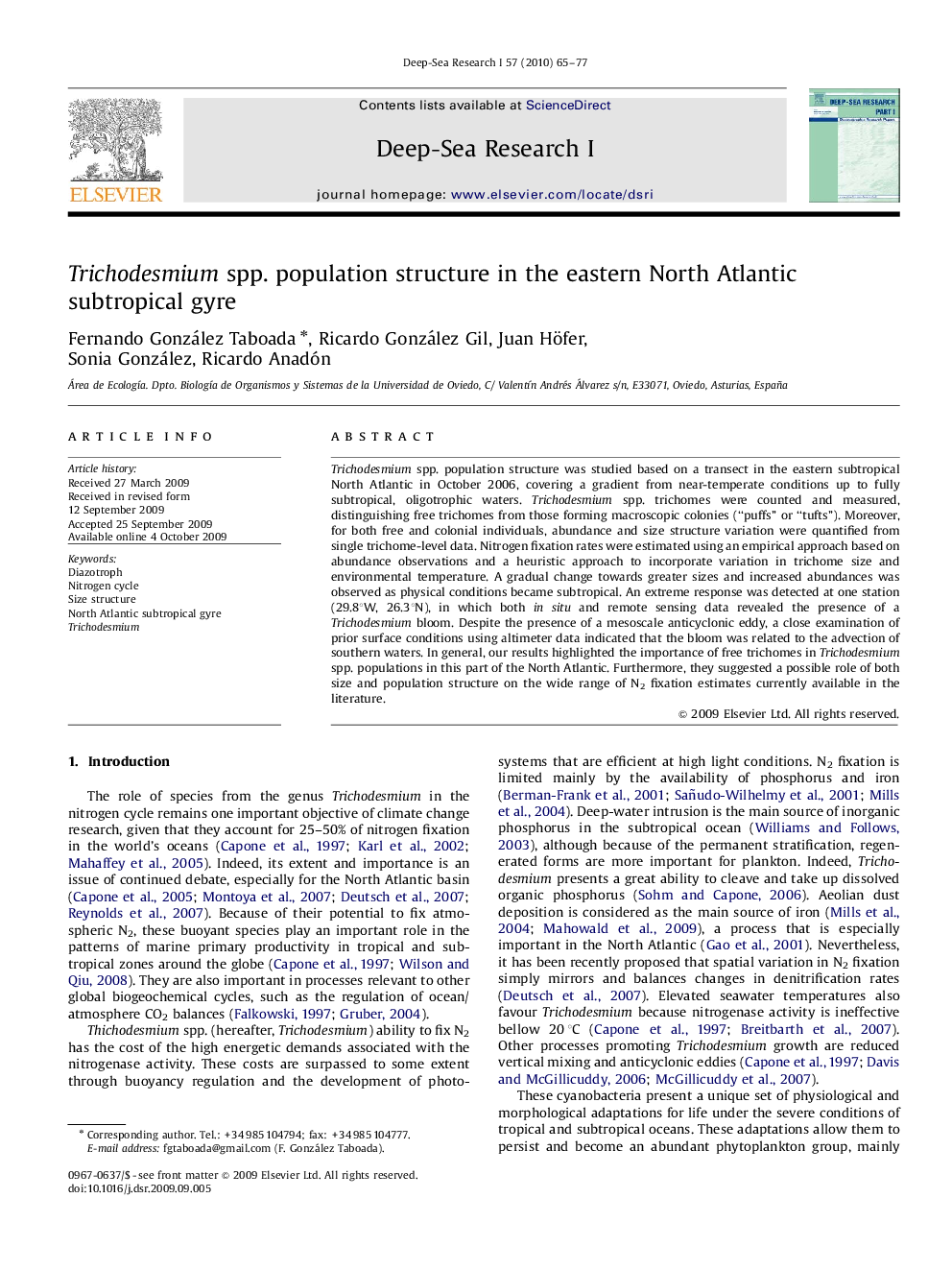| Article ID | Journal | Published Year | Pages | File Type |
|---|---|---|---|---|
| 4535445 | Deep Sea Research Part I: Oceanographic Research Papers | 2010 | 13 Pages |
Abstract
Trichodesmium spp. population structure was studied based on a transect in the eastern subtropical North Atlantic in October 2006, covering a gradient from near-temperate conditions up to fully subtropical, oligotrophic waters. Trichodesmium spp. trichomes were counted and measured, distinguishing free trichomes from those forming macroscopic colonies (“puffs” or “tufts”). Moreover, for both free and colonial individuals, abundance and size structure variation were quantified from single trichome-level data. Nitrogen fixation rates were estimated using an empirical approach based on abundance observations and a heuristic approach to incorporate variation in trichome size and environmental temperature. A gradual change towards greater sizes and increased abundances was observed as physical conditions became subtropical. An extreme response was detected at one station (29.8°W, 26.3°N), in which both in situ and remote sensing data revealed the presence of a Trichodesmium bloom. Despite the presence of a mesoscale anticyclonic eddy, a close examination of prior surface conditions using altimeter data indicated that the bloom was related to the advection of southern waters. In general, our results highlighted the importance of free trichomes in Trichodesmium spp. populations in this part of the North Atlantic. Furthermore, they suggested a possible role of both size and population structure on the wide range of N2 fixation estimates currently available in the literature.
Related Topics
Physical Sciences and Engineering
Earth and Planetary Sciences
Geology
Authors
Fernando González Taboada, Ricardo González Gil, Juan Höfer, Sonia González, Ricardo Anadón,
